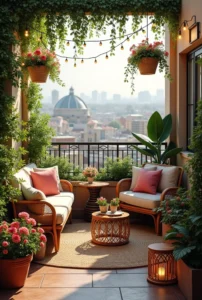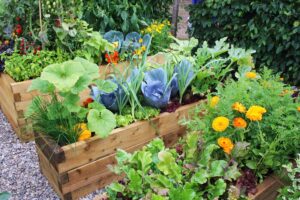Low-Maintenance Landscaping: Beauty and Practicality for Your Garden
Low-maintenance landscaping has become increasingly popular in recent years, particularly among people looking for attractive gardens without the time or resources to care for plants that require constant attention. Focusing on species that demand little water and minimal care, this gardening style is ideal for arid climates and for those with busy lifestyles. Besides being practical, it is also sustainable, helping to conserve natural resources.
Benefits of Low-Maintenance Landscaping
One of the main advantages of this type of landscaping is water conservation. Many of the plants used, such as succulents, cacti, and ornamental grasses, are adapted to dry environments and require minimal irrigation. In times of water scarcity or in regions with little rainfall, this makes a big difference, not only in water usage but also in electricity costs, as it reduces the need for automated irrigation systems.
Another benefit is the low upkeep. Low-maintenance plants generally do not require frequent pruning or intensive care with fertilization and pest control. This is ideal for people with a busy routine or limited gardening experience. With the right choice of species, it is possible to maintain a healthy and beautiful garden with minimal effort.
Popular Low-Maintenance Plants
Here are some of the most popular plants for those looking for a practical and stylish garden:
- Succulents: These plants store water in their thick leaves, making them highly drought-resistant. They come in a variety of shapes, sizes, and colors, making them great for adding visual interest to the garden. Popular species include echeveria and aloe vera.
- Cacti: Perfect for hot, dry climates, cacti are known for their ability to survive with very little water. They also offer an exotic and interesting appearance with unique shapes and often vibrant flowers that add a splash of color to the garden.
- Ornamental Grasses: These plants are great for adding movement and texture to the garden. They can withstand poor, dry soils and require little watering and almost no pruning. Species like blue fescue and Texas feathergrass are popular choices.
- Lavender: Besides being a low-maintenance plant, lavender brings a pleasant fragrance to the garden. It adapts well to dry soils and is known to attract pollinators like bees and butterflies, promoting biodiversity.
- Agave: Another succulent plant that adapts well to dry climates, agave is a sturdy and attractive choice, especially for its large, spiky leaves. It requires very little water and virtually no care.
How to Design a Low-Maintenance Garden
When designing a garden with low-maintenance plants, a few factors should be considered to ensure landscaping success. The first step is to understand the local climate and choose plants that are suitable for your region’s conditions. In dry climates, the species mentioned above are ideal, but in areas with more humidity, it’s essential to find equally resilient and low-maintenance plants that can handle the moisture.
The soil design is also crucial. Low-maintenance gardens benefit from well-drained soils that prevent water from pooling around the roots. To improve drainage, one tip is to use stones or gravel around the plants, which also helps reduce water evaporation and keeps the soil moist for longer.
Using mulch is another excellent strategy. Applying a layer of organic or inorganic material around the plants can help suppress weeds, retain soil moisture, and regulate temperature, while also adding a decorative touch to the garden.
Sustainability and Long-Term Savings
In addition to being aesthetically pleasing and easy to maintain, low-maintenance landscaping is a sustainable choice. Since these plants require less water and care, they help reduce the consumption of natural resources. Moreover, this type of garden typically requires fewer fertilizers and pesticides, minimizing environmental impact and providing a healthier space for local wildlife.
Over time, the initial investment in the right plants and materials pays off, as maintenance costs are significantly lower. For those seeking a balance between practicality, savings, and environmental responsibility, low-maintenance landscaping is an intelligent and attractive choice.
Low-maintenance landscaping offers an elegant and efficient solution for those who want a beautiful garden without the intensive work that often comes with it. With the right choice of species and a few simple design strategies, it’s possible to create an outdoor space that values nature, conserves resources, and perfectly fits a more dynamic lifestyle.












Post Comment